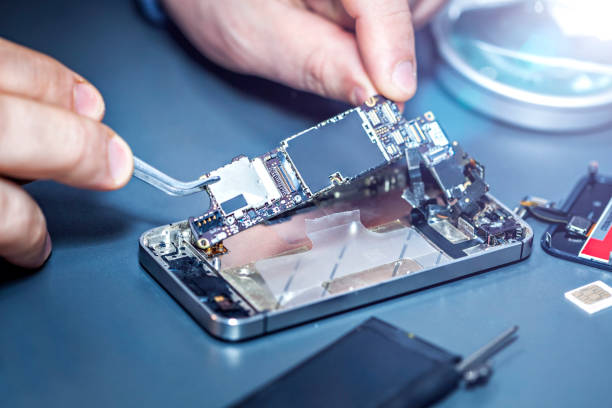The Ubiquity of Mobile Phones and the Inevitability of Damage
Mobile phones have transitioned from luxury to necessity in our fast-paced digital age. They keep us connected to the world around us, help manage our daily tasks, and even serve as platforms for entertainment and learning.
However, the more we depend on these devices, the more vulnerable we are to the inconvenience caused by their damage, especially cracked screens. A slip of the hand or a momentary lapse in attention can lead to a spider web of cracks sprawling across the screen, signalling the need for immediate repair.
The Anatomy of Mobile Phone Damage
Understanding Screen Damage
Screen damage, primarily in the form of cracks, is the most common form of mobile phone impairment. These screens are made from glass—often touted as scratch-resistant and durable, but not indestructible. A fall from even a moderate height can lead to significant damage. While some may opt for makeshift solutions like screen protectors or tape, these are cosmetic fixes that do not address underlying issues such as touch dysfunction or potential LCD damage.
Other Common Repairs
Beyond the screen, other components can also fail. Battery degradation is inevitable over time, leading to reduced performance and necessitating replacement. Charging ports can become loose or obstructed, microphones and speakers can degrade, and software issues can cause phones to malfunction. Each type of damage requires a specific set of tools and expertise, making the repair process as varied as the devices themselves.
The Repair Process: From Diagnosis to Restoration
Step-by-Step Breakdown
The initial step in any repair is diagnosis. Technicians must ascertain the extent of the damage and determine the necessary repairs. This might involve visually inspecting and testing the device’s functionality to pinpoint issues accurately.
Once the problem areas are identified, the actual repair begins. The process typically involves:
- Removing the damaged glass.
- Cleaning the underlying components.
- Carefully place a new screen for a cracked screen.
This task demands precision and expertise to avoid further damage to the sensitive parts underneath, like the LCD or digitizer.
The Role of Professional Repair Services
Professional repair services play a crucial role in extending the lifespan of mobile devices. These experts have the necessary tools and knowledge to handle delicate components and complicated issues that DIY kits and online tutorials cannot address. Their work ensures that repairs are done safely and effectively, minimizing the risk of future complications.
For those seeking a mobile phone fix, trusting professionals is advisable over temporary, unreliable solutions. This approach restores the device’s functionality, maintains its resale value, and prolongs its usable life.
Trends and Innovations in Mobile Phone Repairs
Evolving Technologies and Techniques
As mobile phone technology advances, so do the repair techniques and tools. The industry sees continuous innovation, from developing more durable screen materials to improving diagnostic software that speeds up the repair process. Furthermore, environmental considerations are increasingly coming into play. More services now emphasize sustainable practices, such as using recycled materials for parts or offering refurbishment options.
The Rise of Repair Kits and Online Tutorials
While professional services are recommended, the rise of DIY repair kits and online tutorials has democratized mobile phone repairs, allowing users with the time and patience to attempt minor fixes themselves. These kits typically come equipped with the necessary tools and have instructions designed for non-experts. They are handy for simple tasks like battery replacements or back cover replacements.
Challenges and Future Directions
Navigating Warranty and Manufacturer Restrictions
One significant challenge in the repair industry is navigating the restrictions imposed by manufacturers. Warranties can be voided if a device is opened by unauthorized personnel, a policy that encourages users to seek official services that often come with higher costs.
However, movements and regulations advocating for the right to repair are gaining traction, which could lead to more freedom and lower costs for consumers needing repairs.
Anticipating Future Needs
As technology evolves, the repair industry must anticipate changes in design and functionality that could affect repair processes. For instance, as devices become more water-resistant, the methods for opening and repairing them also change. Staying ahead of these trends is crucial to remain relevant and practical for repair services.
Conclusion
The world of mobile phone repairs is as dynamic as the devices it services. The industry continues to evolve from dealing with the common plague of cracked screens to adapting to new technological advancements. Understanding the intricacies of this field not only helps consumers make informed decisions when accidents happen and underscores the importance of professional expertise in preserving our vital digital connections.
As we integrate mobile phones more deeply into our daily lives, the repair industry will remain an essential aspect of our digital ecosystem, ensuring that our connections, productivity, and access to information are never long disrupted.

